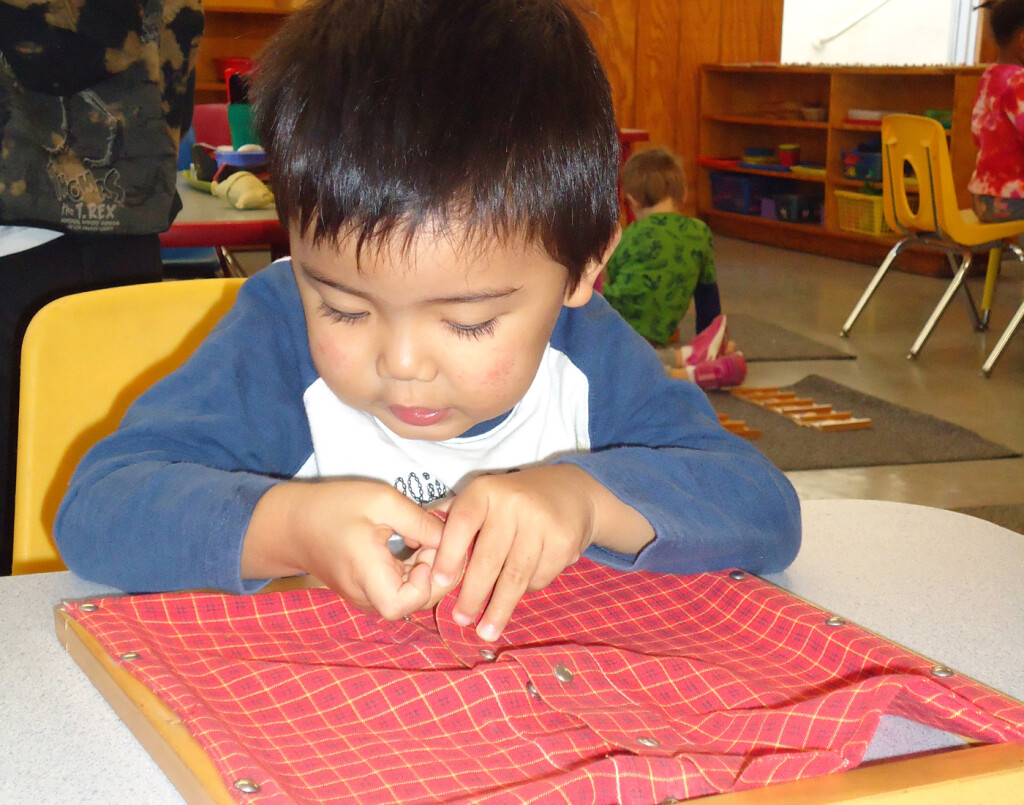According to Dr. Montessori, the evolution of language begins with the infant’s unique capacity to absorb intact fragments of language, which will serve as a basis for his development. This continues through an orderly, unconscious process of assimilation and abstraction. This child first discovers that sounds have meaning, and then he isolates the parts of speech. Finally, he grasps the use of sentences. The constant assimilation of language results in a sudden expansion of vocabulary.
The child learns the oral language naturally. He automatically takes it from his own environment. The work of the teacher is to expose his to the equivalent forms of written language which he learns through the same general pattern of development.
The Montessori child begins reading when he is ready and proceeds at his own pace. His experiences in practical life and sensorial education serve as a preparation for this. The sandpaper letters provide a phonetic basis for reading. This child’s desire and sensitivity to touch are utilized by these letters that are cut out of sandpaper and mounted for tracing. He not only hears the sound and sees the shape, but trains his muscles for when he begins writing. With cut-out letters the child builds his own words on a mat. The material frees him from the fatigue of his still developing writing skills, and yet gives him the opportunity to pursue his interests in words. This child builds his store of words through storytelling, conversation and many exercises in the environment. These activities serve as preparation for the time when the child assimilates what he knows and explodes into reading.
Written language is clarified by illustrating the function of the parts of speech. When a child understands function, he has a concept that allows the definition to have meaning. Logical analysis of phrases, clauses, and sentences lead the child to a recognition of style in the works of literature. He perfects his reading ability through exercises in interpretive reading. The development of language is not limited to a single academic area. All subject matter is inter-related and organized around the child’s vital interests.



















